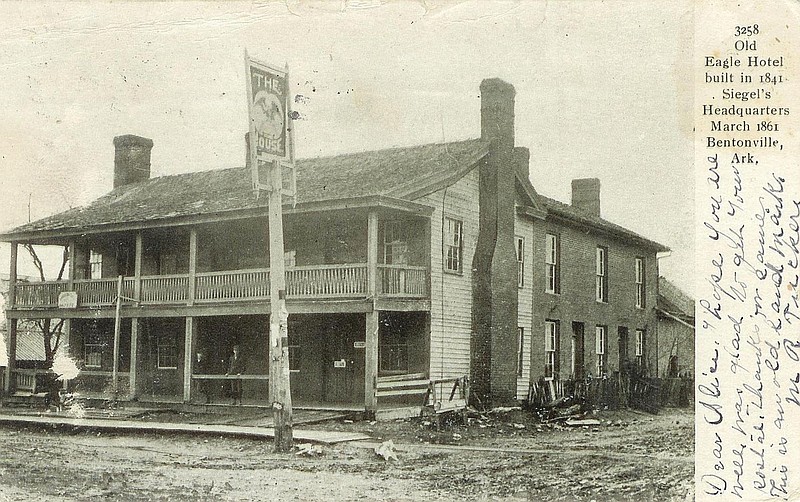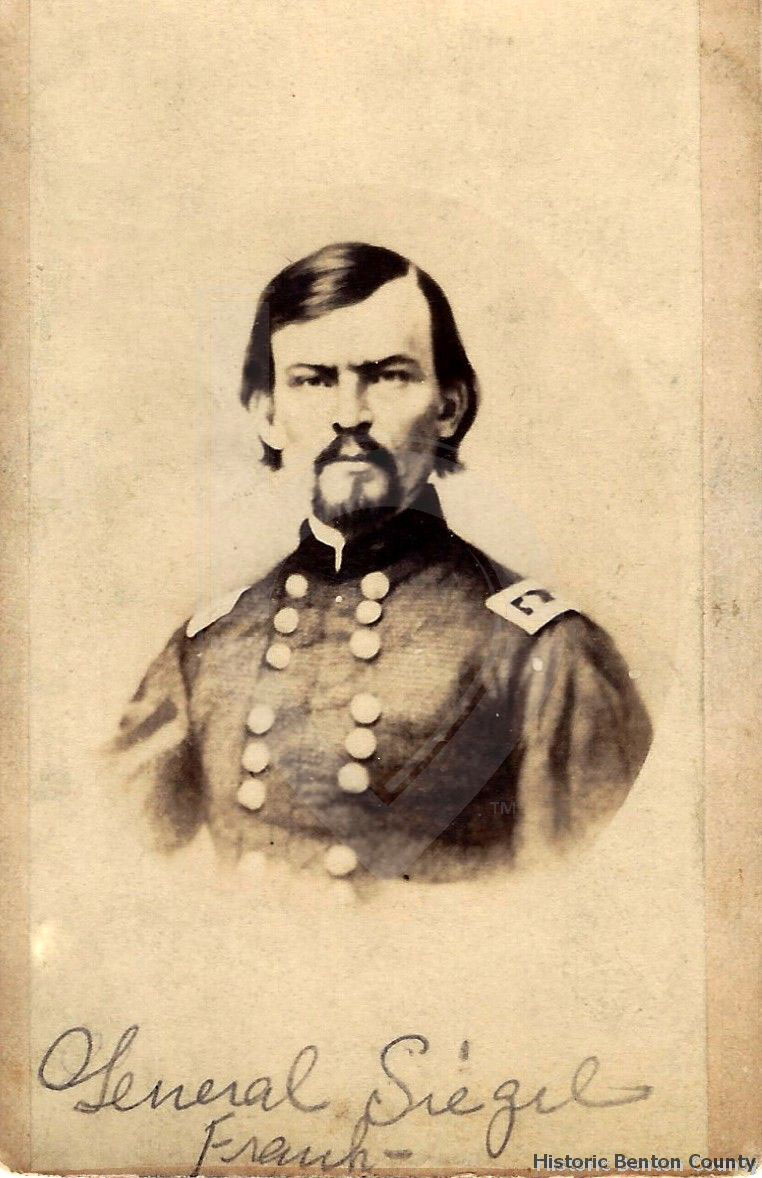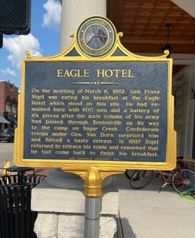Once Arkansas was a part of the Confederacy, only time would tell what role we might play in the Civil War, especially since the beginnings of the conflict took place in the east.
Early in the war, Confederate forces had moved well into Missouri before being pushed back into Arkansas by advancing Union forces. An early engagement to try and slow the Union troops happened at Dunagin's farm near Avoca on February 17, 1862. The Confederates managed to halt the Union's advancement, putting Benton County right in the middle of the Union and Confederate lines.
On February 18, 1862, a Union Cavalry and light artillery unit descended along Wire Road heading to capture Bentonville.
At the intersection where the road turned toward Bentonville, the Union Cavalry surprised a dismounted Confederate Cavalry unit. Union forces took some of the Confederate horses along with their bridles and saddles. Then they roared into Bentonville where they found a small group of Confederate soldiers who had been left behind to break camp from staying in town the previous night.
They captured 32 Confederate soldiers and four wagons of food and equipment, along with 36 horses, mail, Confederate quartermaster paperwork, a sum of Confederate money and an Arkansas 17th Regiment Flag that was flying over the Benton County courthouse.
The courthouse at that time was a brick structure that sat in the middle of the square. The Union forces gathered all the inhabitants who were in town and administered an oath of allegiance to the Union.
The incident that followed would be the first of many to slowly destroy what was then Bentonville.
As the Union forces were preparing to leave town, one soldier decided he was going to return to town to fill his canteen with whiskey. Accounts vary, but either a Confederate soldier or a southern sympathizer shot the man in the head twice and hid his body.
The next day, when a search party was sent out to locate the missing soldier, they found his body in an outhouse. The Union soldiers, upset about their friend's death, began torching the town to avenge their loss. As soon as the commander of the Union forces found out, he ordered the burning to stop, but by then thirty-six buildings had already been destroyed. This portion of the story is often recounted, but a lesser-known fact is that the Union officer in charge, Cpt. Richard A. Edey, was later court-martialed for violation of the 54th Article of War and unofficial conduct.
Although there was never a full battle in Bentonville, there were skirmishes.
On March 6, 1862, Union forces had been passing through Bentonville all day to meet the main force at Sugar Creek. General Fran Sigel was assigned as rear guard for forces moving through town. Assigned to him were 600 soldiers and six large guns. Sigel had just sat down for breakfast at the Eagle Hotel, where the Massey building and Phat Tire Bike Shop are now, when word came that Confederate forces were on the edge of town. Sigel took off immediately and ordered a retreat to a wooded area 2 miles out of town where he took a stand.
At this time the Confederate forces tried to surround Sigel and capture his troops. A force of 3,000 Confederate cavalry was sent to cut off Sigel's retreat but went too far and had to backtrack. After a hard fight, the main body of the Union forces heard the fight going on and joined Sigel in the battle. This skirmish set the stage for the Battle of Pea Ridge.
Bentonville continued to suffer greatly during the war.
It's believed that two churches, the Masonic hall and a school were burned to keep Union forces from using them. The courthouse in the middle of the square was also burned, each side claiming the other burned it. As both armies came through town, any empty building was presumed to belong to sympathizers for the other side and was set on fire. It is also suspected that bushwhackers and robbers would burn down houses.
In short, the residents of Bentonville suffered because of actions taken by both sides as well as other opportunists.
By the time the war came to a close, only twelve structures were left standing in Bentonville. These were the Eagle Hotel, two stores, the jail and eight residences.
With the end of the war on April 9, 1865, the citizens of Bentonville and the surrounding area faced many hardships as the country began the process of reconstruction and, more importantly, restoration of the union. Bentonville's people were determined to return to a normal way of life.
Mr. McCrory, who wrote this article, is part of a group called Vintage Bentonville. The group hosts an online museum for Bentonville/Benton County at vintagebentonville.com. They also host two Facebook pages called Historic Benton County and Vintage Bentonville.



